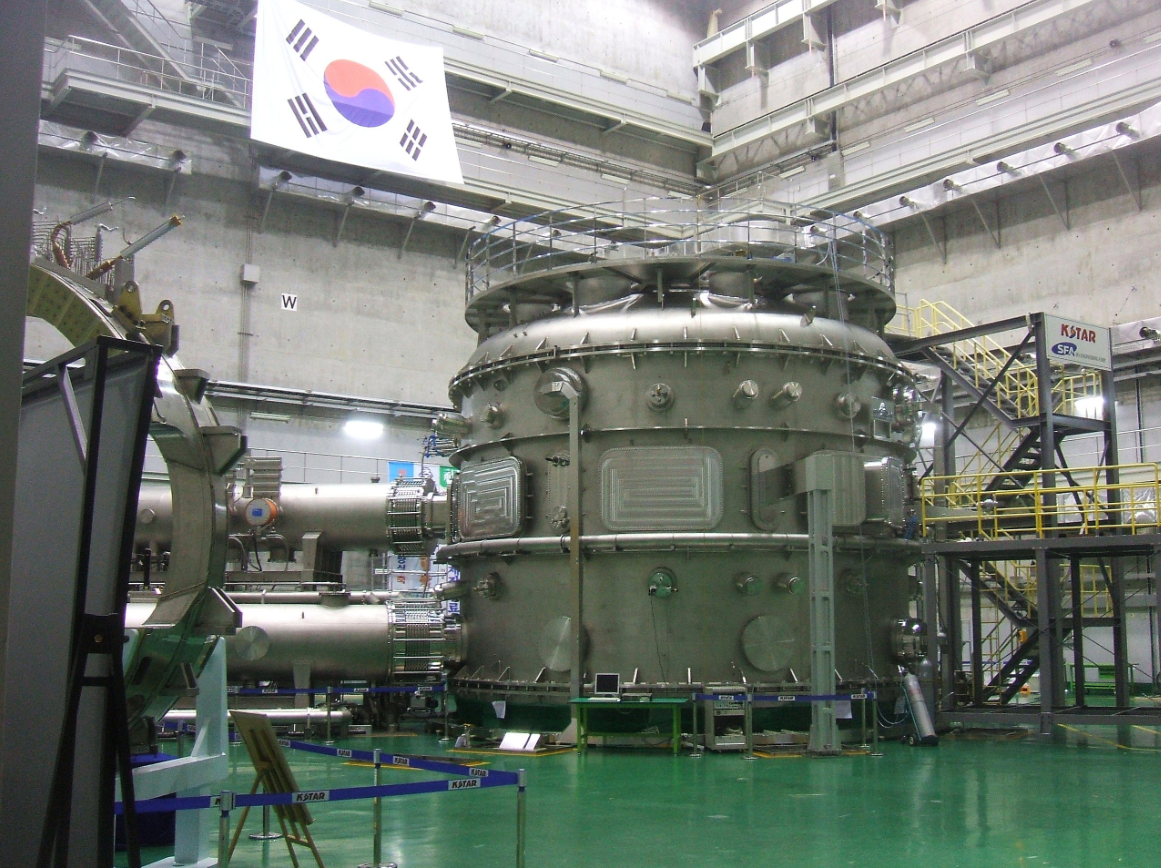KSTAR, alternatively known as the Korean Superconducting Tokamak Advanced Research, broke the previous record in the first plasma experiment that held out for 48 seconds in experiments conducted from December 2023 to February 2024. This newfound information was released on March 21. As scientists replaced the machine’s internal wall components, Korea’s artificial sun, KSTAR, has once again proven its world-class capabilities.
Nuclear fusion energy is developed through ultra-high temperature and high-density plasma in which the nuclear fusion reaction occurs and must be maintained for a long period of time. When “two light atomic nuclei collide, they form a singular atom, releasing large amounts of energy,” as reported by IAEA. Nuclear fusion energy is known to be the future of clean energy. The concept of nuclear fusion was introduced during the 1930s, and ever since, scientists longed to replicate the energy that nuclear fusion releases for the beneficial impacts that it could make on an industrial scale. For instance, nuclear fusion could power virtually clean, limitless, and safe energy to reach the demand for fuel around the world without emitting carbon dioxide or producing nuclear waste. Since its main fuel can easily be extracted from seawater, nuclear fusion plays a crucial role in industrial development. Nuclear energy is great enough to power the sun and the stars, which is how KSTAR developed its very own artificial sun. However, in order to replicate nuclear fusion, a temperature higher than the sun is needed for a stable confinement of the plasma. It is also important to understand that nuclear fusion reactions happen in plasma, a charged, superheated matter composed of free-moving electrons and positive ions, the MIT Plasma Science and Fusion Center explains.
Utilizing this method, KSTAR built a tokamak, which controls the high temperatures needed to generate energy with plasma. It is built shaped like a donut, for it is currently the most sensible way to develop fusion. One of the primary problems that scientists face while experimenting with this device is that it is difficult to find the right temperature to generate energy while not melting its fall from the heat. Due to the structure’s ability to mimic the structure of nuclear fusion, it is commonly called an “artificial sun.”
In plasma experiments conducted from December 2023 to April 2024, the Korean Fusion Energy Research Institute, the KSTAR Research Division is known to have conducted a plasma operation of holding out 48 seconds of ultra-high temperature consisting of 100 million degrees Celsius using high-performance plasma operation mode, which is the key condition for nuclear fusion. Additionally, KSTAR maintained the high temperature and high-density plasma for 102 seconds while utilizing its “H-mode,” an operating regime regarding high confinement plasma in nuclear fusion.
The first domestic record of KSTAR was set in 2018 when a temperature of 100 million degrees was achieved. Later, a world record was set by KSTAR at that time achieving the high temperature needed for fusion was set in 2021 for 30 seconds, CNN states. KSTAR’s performance rose significantly due to the replacement of the diverter, a plasma-facing device in KSTAR, with a tungsten material, making it possible to maintain plasma performance by mitigating the decrease in performance caused by long-term operation. The ultimate goal of KSTAR is to aim for 300 seconds of nuclear fusion by late 2026.
In addition to the results of this plasma experiment, in February 2024, the KSTAR research team released a paper explaining the development of an error magnetic field optimization model using the KSTAR external magnetic field. The paper was released through joint research with the Princeton Plasma Physics Laboratory (PPPL) in the United States while also creating a method to simultaneously stabilize the instability of the plasma edge and center. It is clear that as more steps are being improved with the nuclear fusion device, the more steps humanity is taking towards discovering clean energy.








